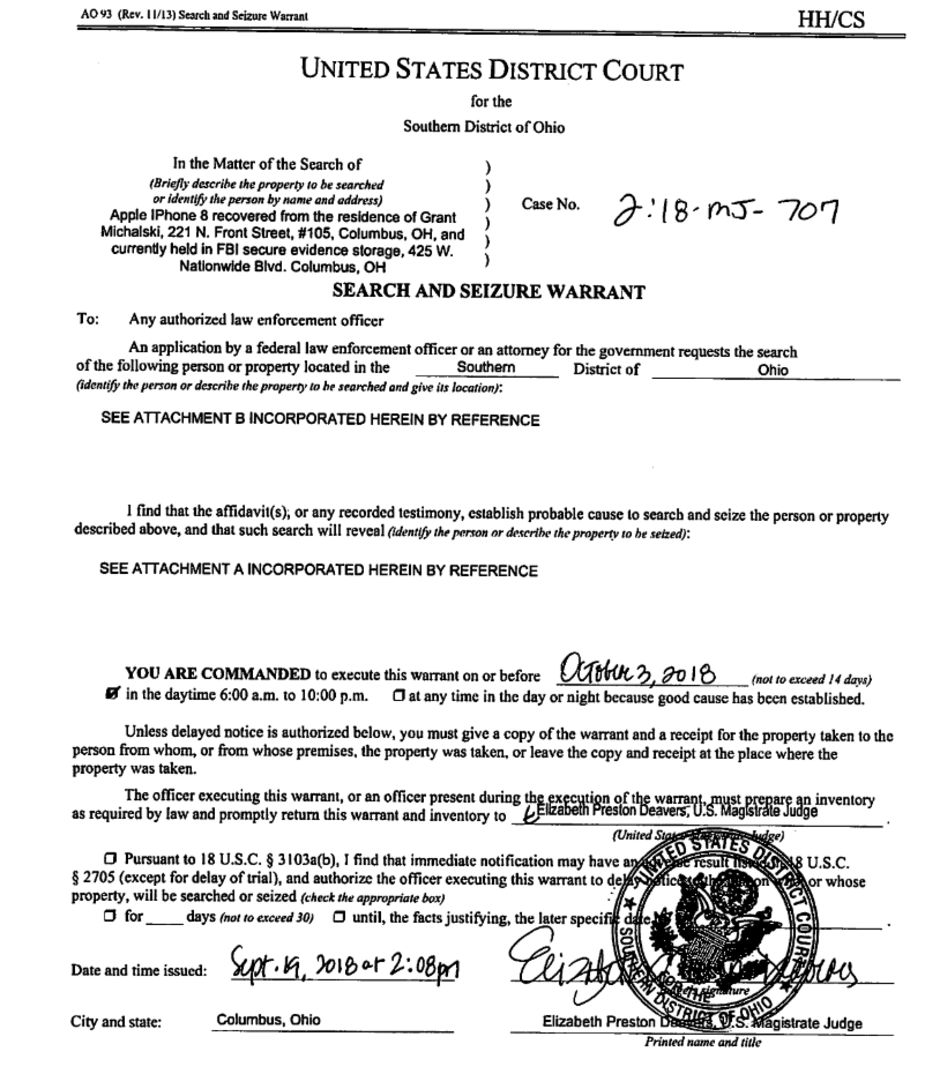FBI forces suspect to unlock his Apple iPhone X using Face ID

According to Forbes, a recent investigation by the FBI resulted in the G-Men forcing a suspect to use Face ID to unlock an iPhone for the first time. It happened last month in Columbus, Ohio when the FBI called on 28 year old Grant Michalski at his home. Armed with a search warrant, the FBI forced Michalski to glance at his Apple iPhone X, unlocking the device.
Since Apple defied a federal judge back in 2016 by not unlocking the iPhone 5c belonging to San Bernardino shooter Syed Farook, locked iPhones have been opened by having suspects use their fingerprints to activate Touch ID. Earlier this year, we told you about cops in Florida who raided a funeral home in order to place the finger of a corpse on his iPhone's Touch ID button.
Now, many law enforcement agencies rely on cracking machines from GrayShift and Cellebrite that use brute force techniques to unlock an iPhone. GrayShift, in particular, has been able to stay one step ahead of Apple, claiming that it solved the USB Restrictive Mode introduced in iOS 12. This prevents the Lightning port on an iPhone from being used to communicate with another device (like a cracking machine) if the iPhone hasn't been unlocked within the previous hour.
As it turns out, using Face ID didn't really help the FBI in Michalski's case. Since the passcode was unknown to the agency, it wasn't able to see everything it wanted. David Knight, the special agent who was involved in unlocking the suspect's phone, couldn't leave it unlocked long enough to use the forensic tools needed to siphon all the data out of the handset that the FBI wanted. That's because these forensic tools require a suspect's iPhone to be hooked up to a computer. And if an iPhone has been locked for over an hour, the passcode is required to sync it to a PC.
While Michalski did not challenge the use of Face ID to unlock his iPhone, some lawyers believe that a suspect can prevent law enforcement from using facial recognition to open a phone by pleading his/her fifth amendment rights against self-incrimination. In previous cases, suspects have been allowed to refuse to turn over their passcodes to the cops for the same reason. However, the body has not been ruled a part of "self knowledge," which has allowed cops to force suspects to unlock their handsets using a fingerprint scanner. This also could apply to Face ID, although there really isn't much case law that can be used to help courts make such rulings.

The search warrant obtained by the FBI for Grant Michalski allowed agents to use Face ID to open his Apple iPhone X
As for Michalski, despite the use of Face ID and a Cellebrite machine, nothing damaging to the suspect was ever recovered from his iPhone. Other devices he used did contain contraband, so the suspect's lawyer says that he does not have to challenge the inclusion of Face ID on the search warrant prepared for his client.
"That's a Pyrrhic victory as there was contraband found on other devices but there would be no need to challenge the warrant's facial recognition feature as my client was not harmed by its use."-Steven Nolder, attorney for Grant Michalski
source: Forbes
Follow us on Google News













Things that are NOT allowed:
To help keep our community safe and free from spam, we apply temporary limits to newly created accounts: